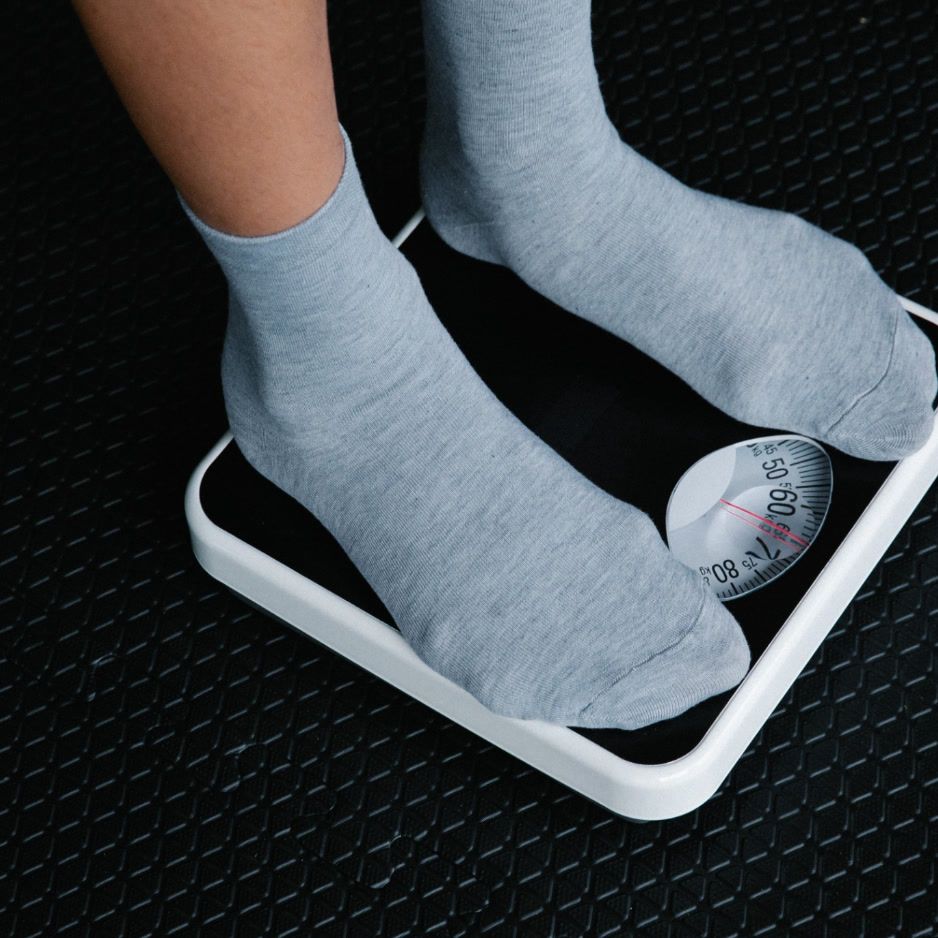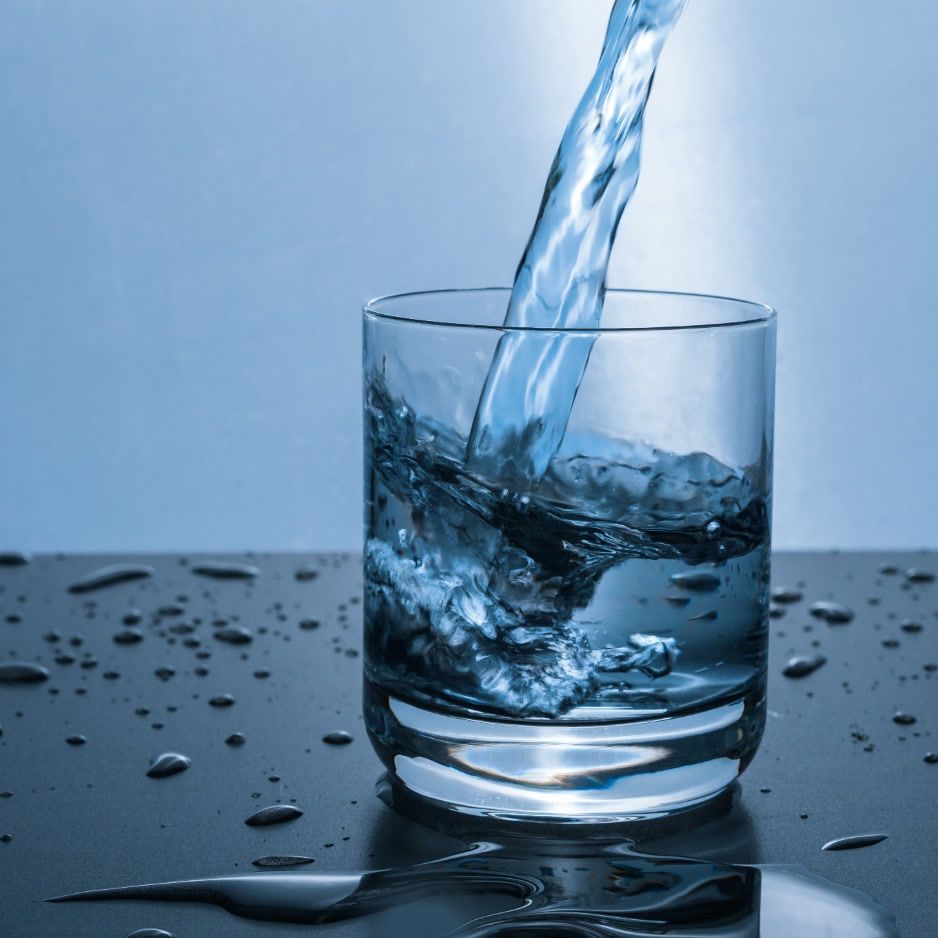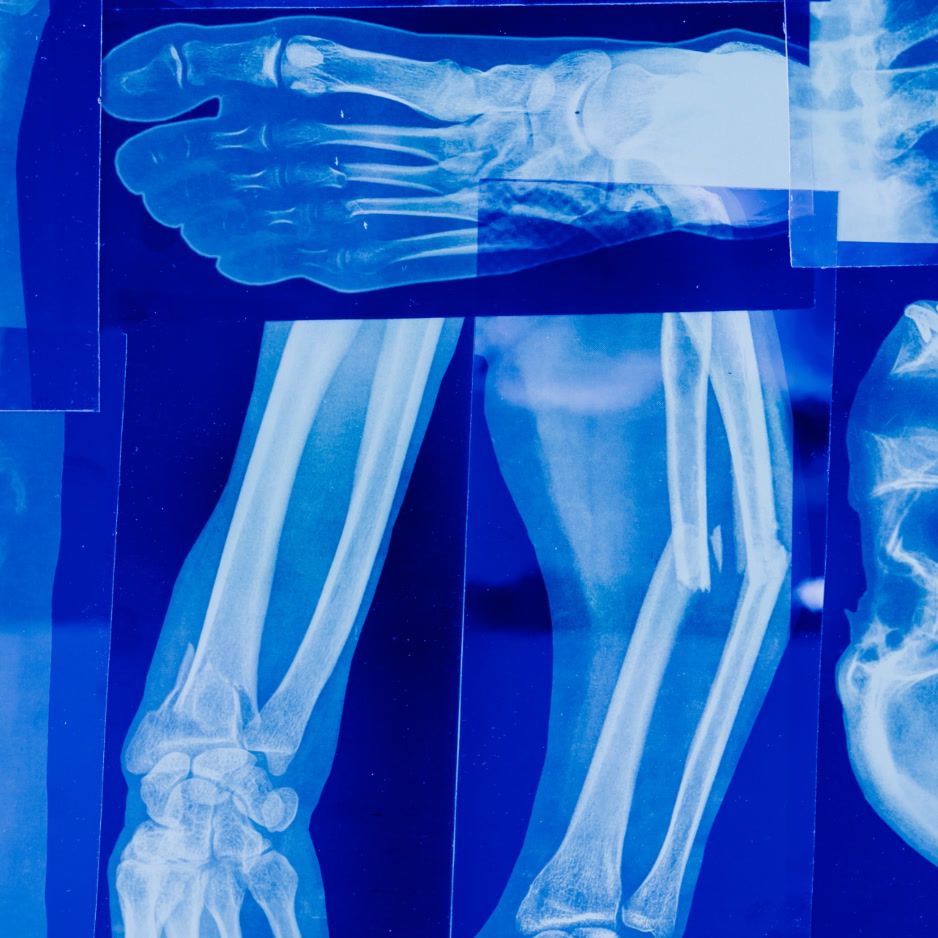Body Fat Percentage Calculator: Free Tool and Complete Guide

Body Fat Percentage Calculator: Free Tool + Complete Guide
Ready to discover your true body composition? This comprehensive body fat percentage calculator uses proven methods to estimate your body fat percentage instantly. Get expert insights on what your results mean and actionable next steps for your health and fitness goals.
Quick Results: Get your estimate in under 60 seconds with basic measurements. For clinical-grade accuracy (within ±1-2%), consider a DEXA scan – the gold standard for body composition analysis.
Interactive Body Fat Calculator
Methods Used By This Calculator
Our calculator uses two scientifically validated methods to estimate your body fat percentage:
1. U.S. Navy Method (Primary Result)
Developed by the U.S. Navy in 1984, this circumference-based formula has been consistently validated in recent studies against DEXA scans with a typical error of ±3-4% (Tometich et al., 2022). It's based on the principle that body fat distribution correlates with specific body circumferences.
For Men: Uses height, neck, and waist measurements
For Women: Uses height, neck, waist, and hip measurements
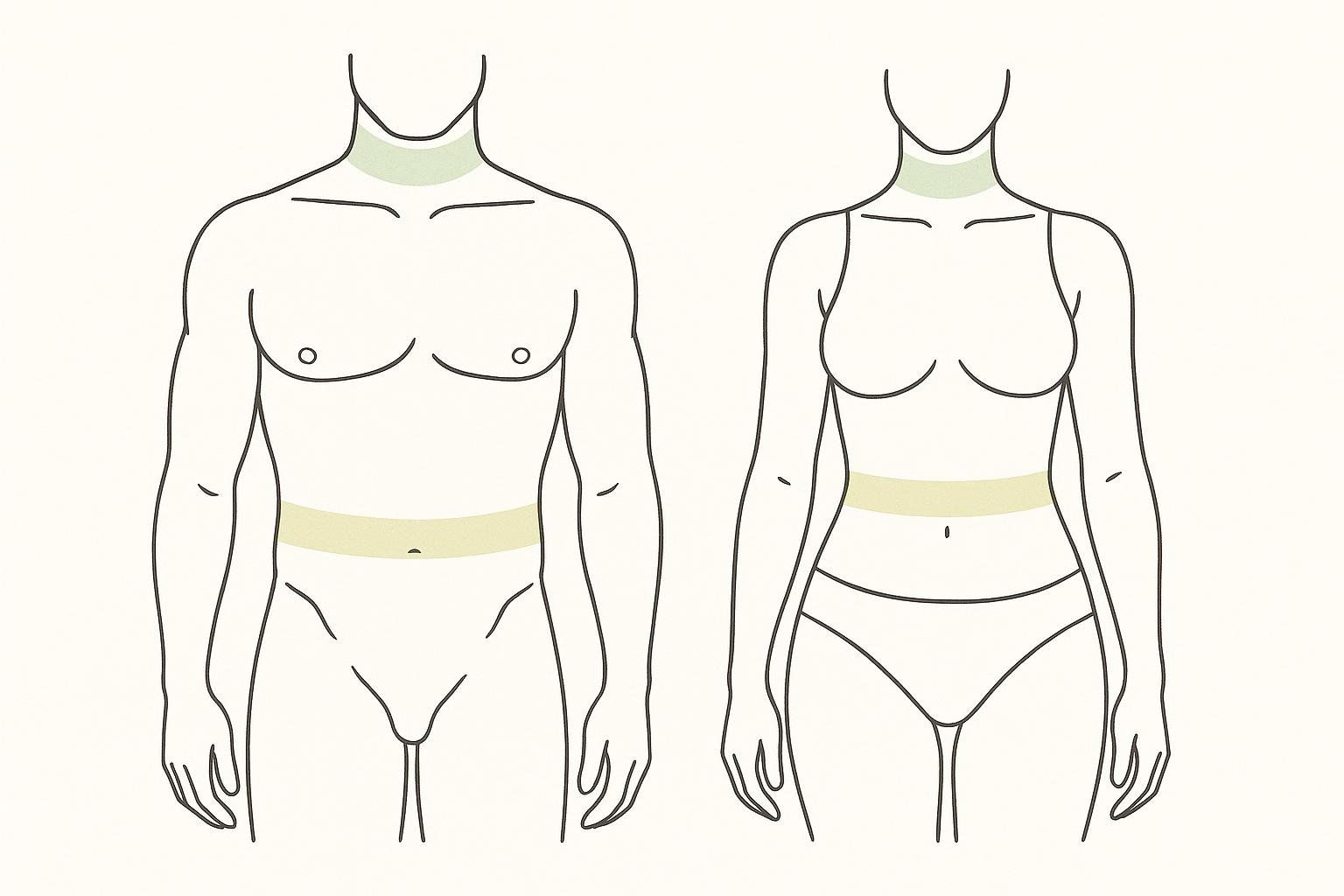
2. BMI-Based Formula (Secondary Estimate)
This method uses your BMI, age, and gender to estimate body fat percentage. While less accurate than the Navy Method, it provides a useful comparison point with a typical error of ±6-10% versus DEXA (Deurenberg et al., 1991).
How Do You Calculate Body Fat Percentage?
There are several methods to calculate body fat percentage, each with different accuracy levels:
Available Methods
- U.S. Navy Method: Uses body circumferences (our primary calculator method)
- BMI-Based Formula: Uses height, weight, age, and gender (our secondary method)
- Skinfold Calipers: Measures fat thickness at specific body sites
- Bioelectrical Impedance: Sends electrical current through body
- DEXA Scan: X-ray technology for precise tissue analysis
- Hydrostatic Weighing: Underwater weighing method
- Bod Pod: Air displacement plethysmography
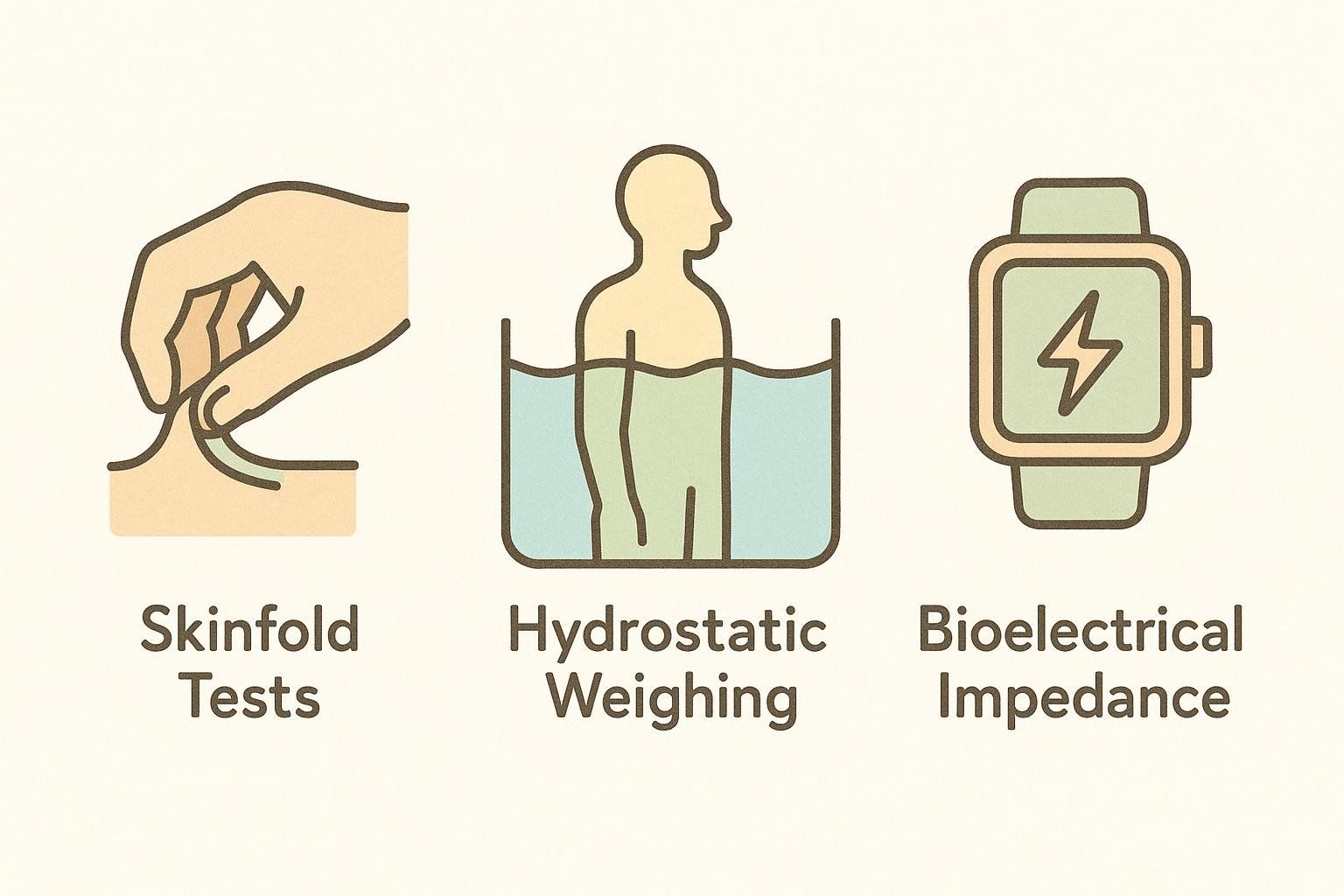
The most accurate approach combines multiple methods or uses clinical-grade equipment like DEXA scanning, which provides ±1-2% accuracy compared to ±3-8% for home methods.
Understanding Your Results: Body Fat Percentage Charts
Men's Body Fat Percentage Guidelines
| Category | Age 20-29 | Age 30-39 | Age 40-49 | Age 50-59 | Age 60+ |
|---|---|---|---|---|---|
| Essential Fat | 2-5% | 2-5% | 2-5% | 2-5% | 2-5% |
| Athletic | 6-13% | 6-13% | 6-15% | 6-15% | 6-16% |
| Fitness | 14-17% | 14-17% | 16-19% | 16-20% | 17-21% |
| Acceptable | 18-24% | 18-24% | 20-25% | 21-26% | 22-27% |
| Obese | ≥25% | ≥25% | ≥26% | ≥27% | ≥28% |
Women's Body Fat Percentage Guidelines
| Category | Age 20-29 | Age 30-39 | Age 40-49 | Age 50-59 | Age 60+ |
|---|---|---|---|---|---|
| Essential Fat | 10-13% | 10-13% | 10-13% | 10-13% | 10-13% |
| Athletic | 14-20% | 14-20% | 14-23% | 14-24% | 14-25% |
| Fitness | 21-24% | 21-24% | 24-27% | 25-29% | 26-30% |
| Acceptable | 25-31% | 25-31% | 28-34% | 30-36% | 31-37% |
| Obese | ≥32% | ≥32% | ≥35% | ≥37% | ≥38% |
Source: American Council on Exercise Body Composition Guidelines
Visualizing Body Fat Percentages
Important note: Individual fat distribution varies significantly. Two people at the same body fat percentage may look quite different based on genetics, muscle mass, and where they naturally store fat (Karastergiou et al., 2012).
What Does 15% Body Fat Really Look Like?
15% body fat represents different physiques for men and women due to biological differences in fat distribution and essential fat requirements.
For Men at 15% Body Fat:
- Abdominal definition: Some abs visible, especially upper abs
- Muscle definition: Good muscle separation in arms, shoulders, and chest
- Overall appearance: Lean and fit, but not "shredded"
- Athletic equivalent: Similar to recreational athletes, soccer players, or dedicated gym-goers
- Health status: Falls in the "fitness" category – excellent for general health

For Women at 15% Body Fat:
- Athletic build: Very lean, similar to competitive female athletes
- Muscle definition: Pronounced muscle definition throughout body
- Overall appearance: Extremely fit and toned
- Athletic equivalent: Similar to figure competitors, distance runners, or gymnasts
- Health considerations: At the lower end of "athletic" range; may affect menstruation for some (Loucks et al., 2011)
What Does 20% Body Fat Look Like?
20% body fat represents different fitness levels for men versus women based on biological differences.
For Men at 20% Body Fat:
- Abdominal area: Some softness around midsection; abs not visible
- Muscle definition: Muscle present but less defined
- Overall appearance: Healthy weight with some extra padding
- Athletic equivalent: Weekend warriors, casual gym-goers
- Health status: Falls in "acceptable" range – healthy but room for improvement
For Women at 20% Body Fat:
- Athletic build: Lean and toned appearance
- Muscle definition: Good muscle definition with feminine curves
- Overall appearance: Fit and healthy looking
- Athletic equivalent: Recreational athletes, fitness enthusiasts
- Health status: Upper end of "athletic" range – excellent for health
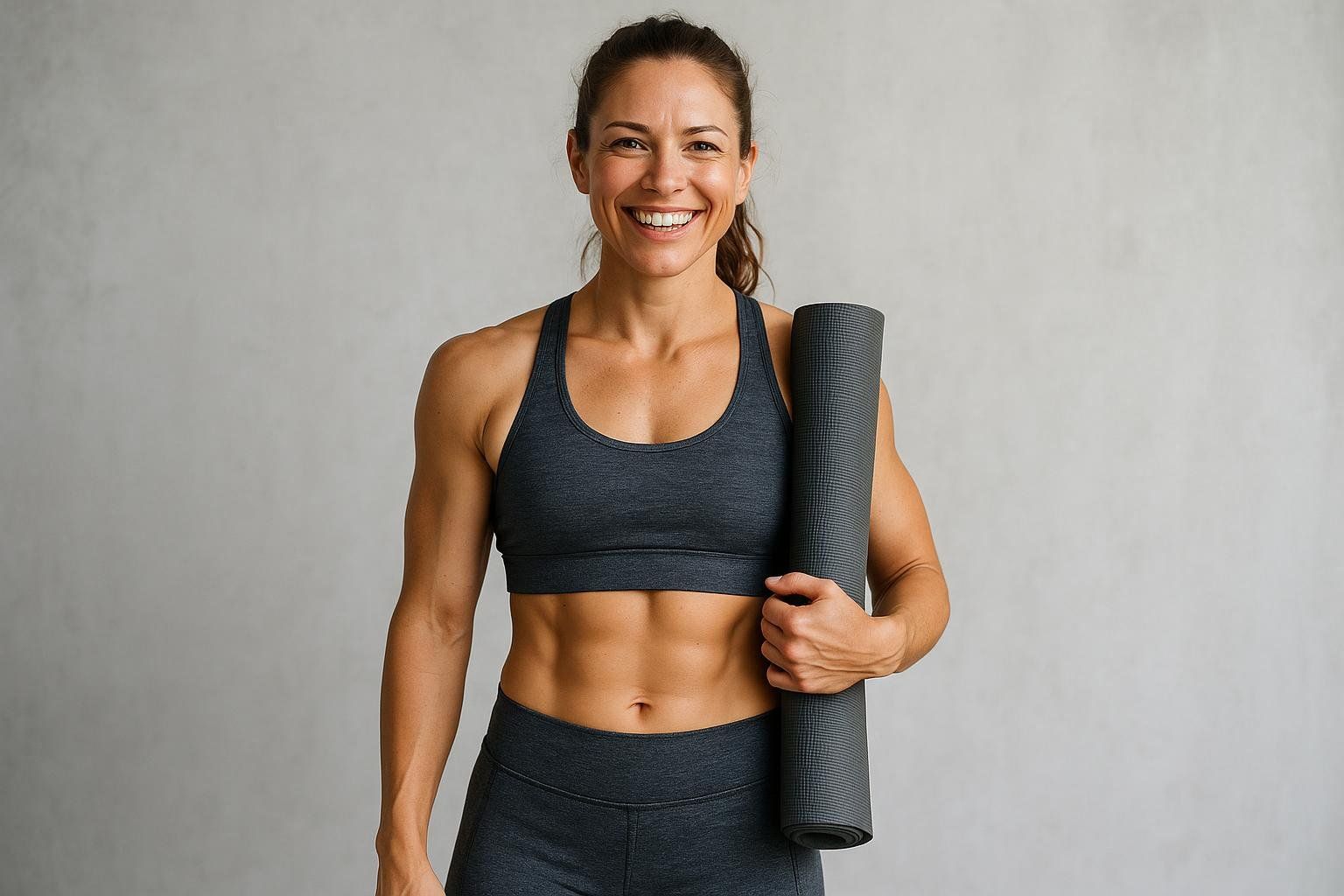
Reality check: Photos online can be misleading due to lighting, posing, and individual variation. A DEXA scan provides objective measurements that eliminate guesswork about body composition.
Why Body Fat Percentage Matters More Than BMI
Body fat percentage tells the real story that your bathroom scale can't. Here's why this metric is crucial for your health:
Limitations of BMI
BMI (Body Mass Index) simply divides your weight by your height squared. This means a muscular athlete and someone with excess belly fat could have identical BMIs – but drastically different health risks. Our detailed comparison explains why body fat percentage reflects health better than BMI.
Example: Two 180-pound, 6-foot men:
- Athlete: 12% body fat, mostly muscle = Excellent health markers
- Sedentary: 25% body fat, less muscle = Higher disease risk
The Muscle Mass Factor
Muscle tissue is more dense than fat tissue, meaning it takes up less space for the same amount of weight. This is why muscular individuals can have a high BMI while maintaining a low body fat percentage. If you're muscular from strength training or athletics, you'll naturally weigh more than someone with the same height but different body composition.

Real-World Examples
This is common in sports; for example, many elite athletes have high BMIs but low body fat. Data from organizations like the NCAA further illustrates how body composition varies widely among athletes:
- NFL running backs often have BMIs of 26-28 but body fat under 12%
- Elite sprinters frequently have BMIs of 25-27 with body fat around 6-12%
Body Fat vs. BMI Reality Check
Here's how the same BMI can indicate completely different health statuses:
- BMI 27 with 15% body fat (man) → Typically indicates very fit composition
- BMI 27 with 25% body fat (man) → May warrant lifestyle changes
- BMI 27 with 20% body fat (woman) → Generally indicates athletic health
- BMI 27 with 35% body fat (woman) → Often signals health risks
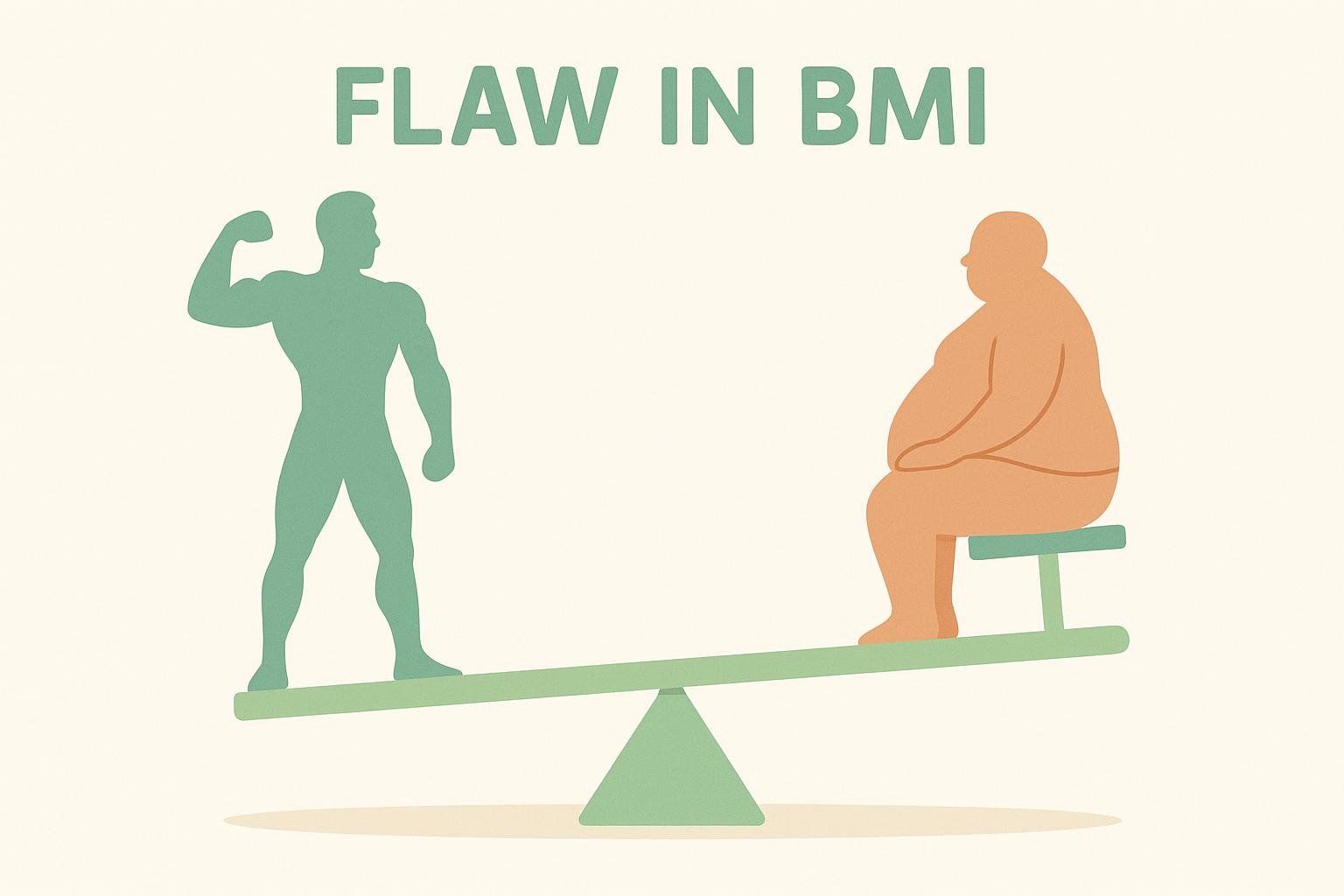
Health Implications You Need to Know
Cardiovascular Disease Risk
Research shows that men with ≥25% body fat and women with ≥35% body fat have significantly higher rates of heart disease, regardless of their BMI (Zeng et al., 2012).
Metabolic Syndrome
Excess body fat – especially visceral fat around your organs – increases insulin resistance and diabetes risk. A DEXA scan can actually measure this dangerous internal fat.
Hormonal Health
- Women: For some individuals, body fat below 15% may pose risks to menstruation and bone health (Loucks et al., 2011)
- Men: Very low body fat can reduce testosterone production (Helms et al., 2014)
- Both: Optimal ranges support healthy hormone production
The Accuracy Hierarchy: How Different Methods Compare
| Method | Accuracy vs. DEXA | Cost | Convenience | Best For |
|---|---|---|---|---|
| DEXA Scan | Gold Standard (±1-2%) | Varies by provider | Clinical visit | Precise tracking, visceral fat |
| Navy Method | ±3-4% | Free | At home | Regular monitoring |
| Skinfold Calipers | ±3-5% (highly skill-dependent) | $15-40 | At home | Fitness enthusiasts |
| BIA Scales | ±5-8% | $30-200 | Daily use | Trend tracking |
| BMI Formula | ±6-10% | Free | Instant | Population screening |
Why DEXA is the Gold Standard
While our calculator provides excellent estimates, a DEXA scan offers unmatched precision by:
- Measuring actual tissue composition with X-ray technology
- Distinguishing visceral fat from subcutaneous fat
- Providing regional analysis (arms, legs, trunk breakdown)
- Tracking lean muscle mass and bone density
- Eliminating hydration variability that affects other methods
DEXA technology offers the highest accuracy available outside laboratory settings. This allows for confirmation of muscle gain during fat loss, an insight home methods cannot provide.
How to Take Accurate Measurements
Neck Measurement
- Location: Just below the larynx (Adam's apple)
- Technique: Keep tape snug but not tight; don't tilt your head
- Measurement: Record to the nearest 1/4 inch or 0.5 cm
Waist Measurement
- Location: At navel level for both men and women
- Technique: Don't suck in stomach; keep tape parallel to floor
- Measurement: Record to the nearest 1/4 inch or 0.5 cm
Hip Measurement (Women Only)
- Location: At widest point around buttocks
- Technique: Keep tape parallel to floor
- Measurement: Record to the nearest 1/4 inch or 0.5 cm
Pro Tips for Consistency
- Measure at the same time – morning before eating for consistency
- Use a flexible tape measure – cloth or fiberglass, not metal
- Take 2-3 measurements and average for accuracy
- Keep tape snug but don't compress the skin
What Your Results Mean: Personalized Action Plans
Athletic Range (Men 6-13%, Women 14-20%)
You're in elite territory! This range is typical for competitive athletes.
Action Plan:
- Monitor energy levels and recovery quality
- Ensure adequate calorie intake to support training
- Track lean muscle mass to prevent loss
- Consider quarterly DEXA scans during competition prep
Fitness Range (Men 14-17%, Women 21-24%)
Excellent work! You're in an optimal range for health.
Action Plan:
- Maintain current approach if satisfied with results
- Focus on strength training to preserve muscle
- Use this calculator monthly to track trends
- Consider annual DEXA scan for detailed analysis
Acceptable Range (Men 18-24%, Women 25-31%)
You're healthy, with room for improvement if desired.
Action Plan:
- Aim to lose 0.5-1% body fat per month through diet and exercise
- Prioritize strength training to build or maintain lean muscle
- Track progress with this calculator every 2-3 weeks
- Consider how to improve body composition
Obese Range (Men ≥25%, Women ≥32%)
This is an important opportunity to focus on improving your long-term health.
Action Plan:
- Consult a healthcare professional for personalized guidance
- Focus on creating a sustainable calorie deficit
- A balanced plan often includes both cardio and strength training, which also supports long-term bone density
- Prioritizing protein intake to preserve muscle is a key strategy during weight loss
- Track weekly progress and consider professional guidance
- Learn about visceral fat reduction
Common Questions About Body Fat Calculators
How often should I calculate my body fat percentage?
For active goals: Every 2-3 weeks using the same method
For maintenance: Monthly tracking is sufficient
Gold standard: DEXA scan every 3-6 months for precise tracking
Why do different calculators give different results?
Our calculator uses the U.S. Navy formula, one of the most validated approaches for at-home estimation. However, expect a 2-4% variation when comparing results from different types of calculators, as each uses a formula based on unique population data and measurement protocols.
Can I spot-reduce body fat from specific areas?
No – your genetics determine where you lose fat first. You can't "target" belly fat or thigh fat specifically. Total body fat reduction through diet and exercise is the only proven approach.
Is 15% body fat healthy and realistic?
- Men: 15% falls in the "fitness" range – very achievable and healthy
- Women: 15% is at the lower end of "athletic" – possible but may affect hormones
What about hydration and timing?
The Navy Method isn't significantly affected by hydration like electrical impedance methods. However, for consistency:
- Measure at the same time of day
- Avoid measuring right after intense exercise
- Don't measure during menstruation (women) due to water retention
Beyond the Numbers: Building a Sustainable Approach
The 0.5-1% Rule
Aim to lose 0.5-1% body fat per month for sustainable results that preserve lean muscle mass. Faster fat loss often leads to muscle loss and metabolic slowdown.
The Muscle Preservation Priority
As you reduce body fat, maintaining lean muscle mass should be priority #1:
- Strength training: 2-3x per week minimum
- Protein intake: Focus on adequate protein throughout the day to support muscle preservation, as recommended by the ISSN's position stand on protein
- Adequate sleep: 7-9 hours for optimal recovery
- Moderate calorie deficit: Avoid extreme restriction
When to Consider Professional Help
Seek guidance from healthcare providers or certified professionals if:
- Your body fat percentage is in concerning ranges
- You're experiencing symptoms of under-fueling (fatigue, mood changes, hormonal disruption)
- You have specific athletic or physique goals
- You want personalized nutrition and training plans
The Science Behind Body Fat Distribution
Why Men and Women Differ
According to UC Davis Sports Medicine, essential fat requirements explain why healthy ranges differ by gender:
- Women need 10-13% essential fat for hormone production, fertility, and pregnancy
- Men need only 2-5% essential fat for basic physiological functions
Hormonal influences affect fat storage patterns:
- Estrogen promotes subcutaneous fat storage (hips, thighs)
- Testosterone promotes muscle development and may concentrate fat abdominally
The Visceral Fat Factor
Not all body fat is created equal. Visceral fat – deep abdominal fat surrounding organs – poses greater health risks than subcutaneous fat under your skin.
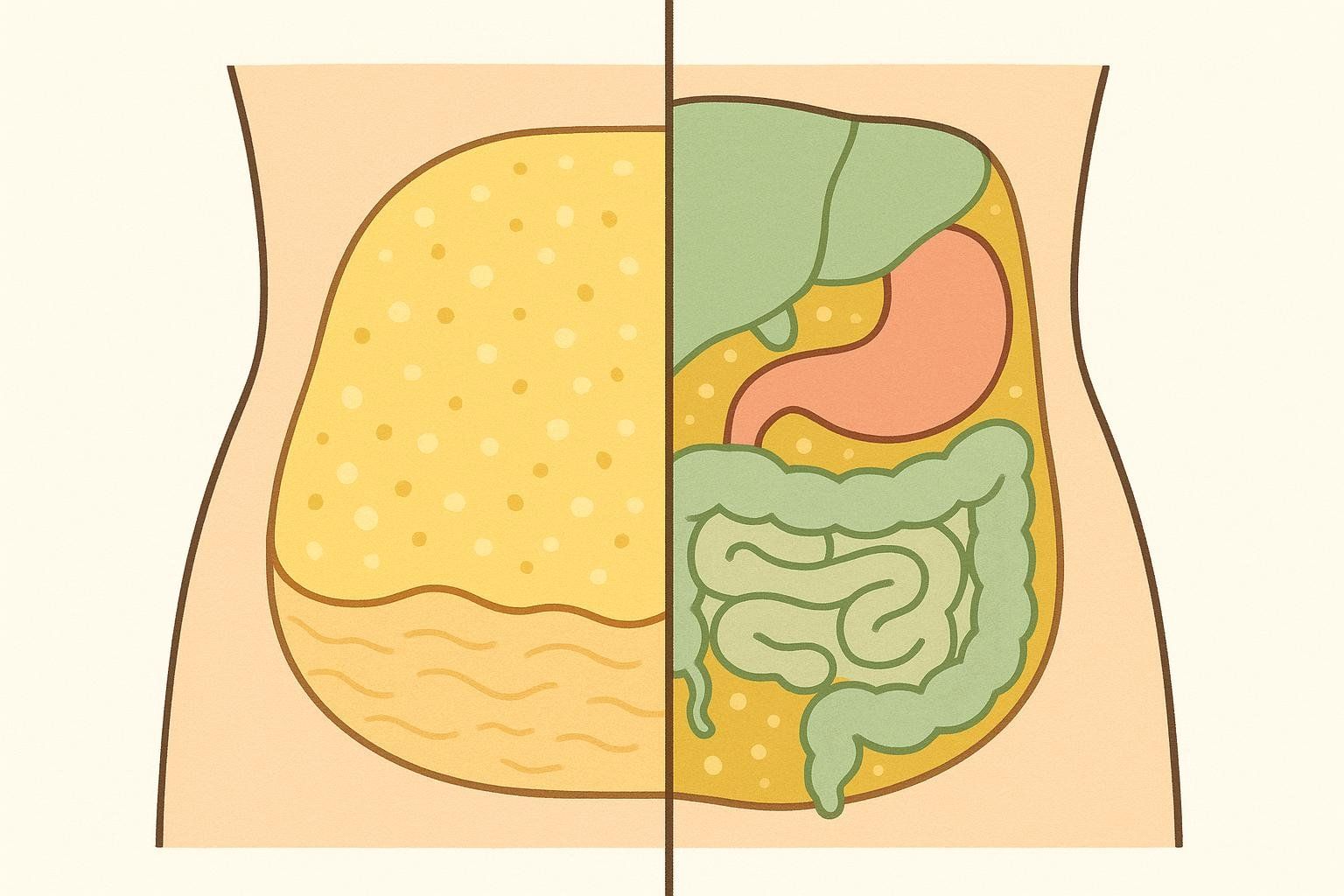
The National Institutes of Health lists the following as warning signs of excess visceral fat:
- Waist circumference >40 inches (men) or >35 inches (women)
- Waist-to-height ratio >0.5
- Apple-shaped body type vs. pear-shaped
Only DEXA scans can precisely measure visceral fat levels. Learn more about understanding visceral fat.
Take Action: Your Next Steps
1. Establish Your Baseline
- Use our calculator for an immediate estimate
- Take progress photos from front, side, and back
- Record your measurements for future comparison
2. Set Realistic Goals
- Target 0.5-1% body fat loss per month
- Focus on building/maintaining lean muscle
- Prioritize health markers over other factors
3. Create Your Action Plan
- Nutrition: Moderate calorie deficit with adequate protein
- Exercise: Combine strength training with cardiovascular activity
- Recovery: Prioritize sleep, stress management, and rest days
- Tracking: Regular measurements and progress photos
4. Consider Advanced Testing
For serious goal-setters, consider upgrading to the gold standard with a DEXA scan:
- Get your precise baseline with visceral fat analysis
- Track muscle gains and fat loss separately
- Identify any muscle imbalances or health concerns
- Access professional-grade progress tracking
The Bottom Line
While this body fat percentage calculator provides valuable insights using scientifically validated methods, remember that consistency matters more than perfection. Use the same measurement technique each time, focus on long-term trends rather than daily fluctuations, and prioritize sustainable lifestyle changes over rapid results.
Your body fat percentage is just one piece of the health puzzle – combine it with strength, endurance, energy levels, and overall well-being for a complete picture of your health.
Ready to move beyond estimates and get the most accurate body composition data available? Schedule your DEXA scan with BodySpec today and discover exactly what's happening beneath the surface. Available across California, Texas, and Washington.
